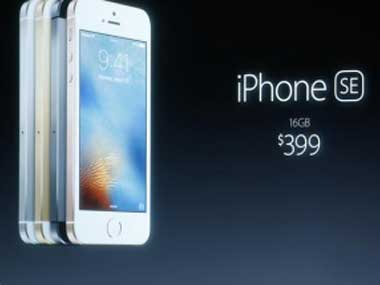 Apple’s plan to target buyers in emerging markets with its smaller and cheaper iPhone SE could backfire in India as the country’s mobile-first population, whose primary computing device is a smartphone, has already shifted to larger screen phones or phablets.
Apple’s plan to target buyers in emerging markets with its smaller and cheaper iPhone SE could backfire in India as the country’s mobile-first population, whose primary computing device is a smartphone, has already shifted to larger screen phones or phablets.
With similar specifications to its outgoing flagship iPhone 6s Plus and a price tag of Rs 39,000, the iPhone SE costs approximately Rs 5,000 more and Rs 2,000 less than the base variants of the iPhone 6 and 6s, respectively, on popular e-commerce websites. The device is slated for launch in India on April 8.
Globally, the iPhone SE will replace Apple’s ageing iPhone 5s model, which currently retails at around Rs 18,500 in India. Despite selling older models in the country with hefty price cuts, the trend in the past two quarters has seen a shift towards Apple’s larger iPhone 6 and 6s models.
“If you see, the older phone models, even though Apple is pushing them at lower price points, are selling less. The sales mix of Apple phones in the last two quarters (second half of 2015) in India is made up by 75-80 per cent of the iPhone 6 and iPhone 6s,” said N Shah, research director at Counterpoint Research.
“A 4-inch phone is a disappointing thing at Rs 39,000 in India. The addressable market is very small. It would have made sense if the device size was 4.7-5 inch,” he added.
The shares of devices with screens smaller than 4-inch and 4-4.5 inch in India in December 2015 were seven per cent and 10 per cent, respectively, a big drop from 15 per cent and 26 per cent in the same month in the previous year. On the other hand, devices with screen sizes of 5.5-6 inch cornered 15 per cent of the market share, up from just four per cent.

“Only 10 per cent of the total smartphones sold at the end of 2015 were 4-inch screen size, which has shrunk from almost one-fourth of the market a year ago. In just one year, the consumer preference has completely shifted towards phablets,” said Shah.
Apple claims it sold about 30 million 4-inch iPhones in the past year, which would roughly contribute to 15 per cent of the company’s overall iPhone sales. While the company is offering incentives such as the latest processor, Apple Pay, a great camera and the latest software with the iPhone SE over the 5s and 4s, the small screen size might still remain a deterrent to sales.
“India is a mobile-first country. There is a clear trend towards consumers needing a bigger screen size. Not many people own a laptop or tablet, meaning the phone is the primary device, not a second or third device,” adds Shah.
Apple has been increasing its focus on India, witnessing 76 per cent growth in iPhone sales in the country during the October-December quarter, while globally sales growth slowed to just 0.4 per cent.
Another move in this direction is Apple’s application with the government of India to sell certified pre-owned phones in the country.
Other analysts believe that the iPhone SE will allow Apple to increase its market share in India, which currently stands at around two per cent in terms of sales and 10 per cent in terms of revenue.
“Users will be able to buy a phone with latest features, which is very different from buying an older version at a lower price. I think this will appeal to people who couldn’t afford their flagship phone,” said Anshul Gupta, research director at Gartner.
Smartphone penetration in India, the second largest mobile market after China, is less than 15 per cent, and is dominated by Google’s Android operating system. Nine out of 10 smartphones sold in India is an Android phone with Chinese and local phone makers such as Xiaomi and Micromax offering more powerful smartphones at lower prices than Apple’s iPhone.
[“source-Business-standard”]

